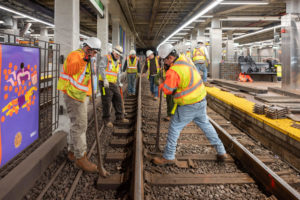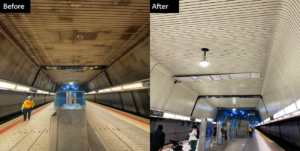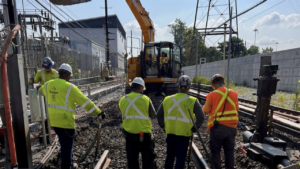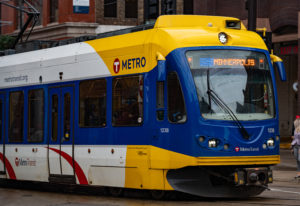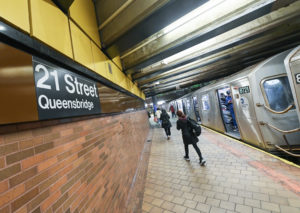MTA continues Sandy resiliency work on all fronts
Written by Jenifer Nunez, assistant editor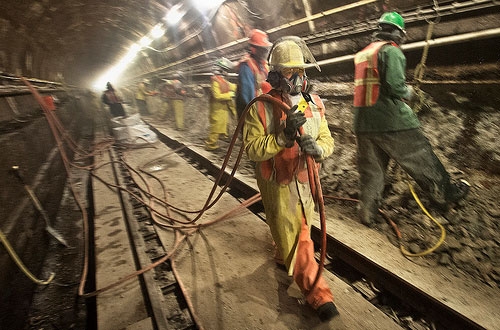
Despite a historic level of repair work throughout the New York Metropolitan Transportation Authority's network of tracks, tunnels and under-river tubes, the authority said that effects of Superstorm Sandy will be felt for years to come.
Work crews, however, are making steady progress fixing the extensive damage caused by several feel of salt water, particularly to the system’s under-river tubes.
So far, 10 weekends of work have been completed inside the G Line’s Greenpoint Tubes. Heavily damaged by the corrosive effects of salt water, the tubes’ systems and components are being stripped out and replaced. That work has resulted in the repair of more than 3,300 feet of track and 83,000 feet of cables.
New York City Transit is also taking advantage of the weekend service outages to accomplish repair work in the stations that are closed during the weekends tube work is being done. The additional work focuses on improvements to the station environment. During these periods, more than 95,000 square feet of station ceilings and columns have been scraped and painted at the Greenpoint and 21 St. stations. Additionally, 28 stairways have been rehabilitated.
When work is complete, 1,200 linear feet of rails, plates and tie blocks along each of the twin tubes will have been replaced. Tunnel lighting will be renewed and improved along approximately 1.8 miles of track and a four-hour battery back-up system will be installed.
Both of the tubes will benefit from duct bank and cable replacement, including the cleaning of ducts and the replacement of power and communication cables. During this project, signal equipment, cable and the power supply will be replaced and the opportunity will be taken to remove some signal system components outside of the flood zone.
Further south, intensive repair work continues in the Montague Tubes, which has been closed since August. Since then, nearly all cabling and tunnel lighting has been removed and heavy demolition of duct banks is 90 percent complete on one of the tracks.
In another effort, this one aimed at protecting the system from harm, the area of Lower Manhattan has been a showcase for the demonstration of flood-fighting techniques and hardware. Major strides in resiliency have been taken recently with the successful installation and testing of prototype flood-prevention measures for station stairway entrances and street-level vent grates at some of the most vulnerable locations.
http://new.mta.info/

